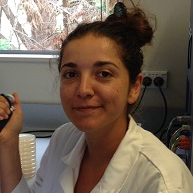Plant Associated Bacteria, so Different and so Similar: From Pathogens to Symbionts and to Biological Control Agents
A special issue of Microorganisms (ISSN 2076-2607). This special issue belongs to the section "Plant Microbe Interactions".
Deadline for manuscript submissions: closed (15 November 2021) | Viewed by 40636
Special Issue Editors
Interests: molecular plant pathology; phytopathogenic bacteria; quarantine phytopathogens; molecular epidemiology; molecular diagnostics; innovative sustainable control; auxin; MATE transporters; Pseudomonas savastanoi; Curtobacterium flaccumfacien
Special Issues, Collections and Topics in MDPI journals
Interests: biological control; environmental microbiology; molecular microbiology; transcriptomics; genomics; Lysobacter; Bacillus; Pseudomonas; molecular plant pathology
Interests: plant-bacteria interaction; horizontal gene transfer; bacterial evolution; integrative conjugative elements; Pseudomonas syringae pv actinidiae; molecular biology
Special Issue Information
Prof. Dr. Stefania Tegli
Prof. Dr. Gerardo Puopolo
Dr. Elena Colombi
Guest Editors
Manuscript Submission Information
Manuscripts should be submitted online at www.mdpi.com by registering and logging in to this website. Once you are registered, click here to go to the submission form. Manuscripts can be submitted until the deadline. All submissions that pass pre-check are peer-reviewed. Accepted papers will be published continuously in the journal (as soon as accepted) and will be listed together on the special issue website. Research articles, review articles as well as short communications are invited. For planned papers, a title and short abstract (about 250 words) can be sent to the Editorial Office for assessment.
Submitted manuscripts should not have been published previously, nor be under consideration for publication elsewhere (except conference proceedings papers). All manuscripts are thoroughly refereed through a single-blind peer-review process. A guide for authors and other relevant information for submission of manuscripts is available on the Instructions for Authors page. Microorganisms is an international peer-reviewed open access monthly journal published by MDPI.
Please visit the Instructions for Authors page before submitting a manuscript. The Article Processing Charge (APC) for publication in this open access journal is 2700 CHF (Swiss Francs). Submitted papers should be well formatted and use good English. Authors may use MDPI's English editing service prior to publication or during author revisions.
Keywords
- Plant-associated bacteria
- Plant pathogens, symbionts, and biocontrol agents
- Bacterial communication
- Bacterial secretion systems
- Bacterial effectors
- Quarantine bacteria
- Genomics
- Transcriptomics
- Metabolomic
- Epidemiology
- Molecular and innovative diagnosis
- Ecofriendly control of plant diseases
Benefits of Publishing in a Special Issue
- Ease of navigation: Grouping papers by topic helps scholars navigate broad scope journals more efficiently.
- Greater discoverability: Special Issues support the reach and impact of scientific research. Articles in Special Issues are more discoverable and cited more frequently.
- Expansion of research network: Special Issues facilitate connections among authors, fostering scientific collaborations.
- External promotion: Articles in Special Issues are often promoted through the journal's social media, increasing their visibility.
- Reprint: MDPI Books provides the opportunity to republish successful Special Issues in book format, both online and in print.
Further information on MDPI's Special Issue policies can be found here.








